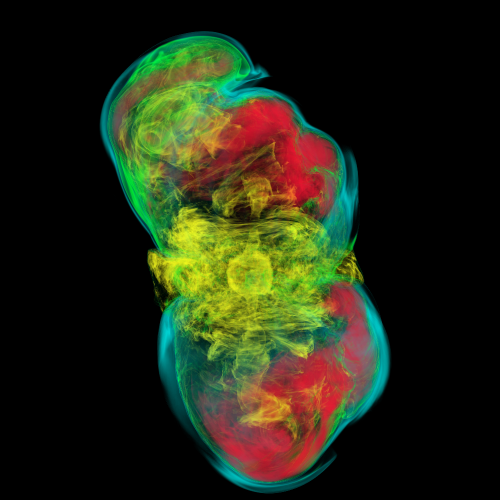Supercomputer-powered supernova simulations shed light on distant explosions

Using the National Science Foundation-supported Stampede supercomputer, Philipp Moesta and Christian D. Ott from the California Institute of Technology succeeded in performing the first 3-D simulations of a collapsing star that takes into account the influence of general relativity and magnetohydrodynamics—the interplay of electrically conducting fluids like plasmas and powerful magnetic fields. The death of these collapsing stars leads to energetic, jet-driven supernova explosions.
Their findings show that the simulations behave very differently in full, unconstrained 3-D compared to the same model simulated with the assumption that stars are sperically symmetrical.
A typical simulation by Ott and Moesta uses six to eight million hours of computer processing time to recreate the death of the star and approximately 200 milliseconds of the star's evolution after the collapse of its core. They typically run their simulations simultaneously on 4,000 computing cores for about two months.
"The final word about what ultimately happens with our 3-D magneto-rotational supernova is not yet spoken," Ott wrote in a Huffington Post article about his recent work. "It could be that the explosion takes off eventually, blows up the entire star, leaving behind the central neutron star. It's also possible that the explosion never gains traction and the stellar envelope falls onto the neutron star, which will then collapse to a black hole. We'll see. We are pushing our simulations further and are ready for moresurprises."
Provided by National Science Foundation




















